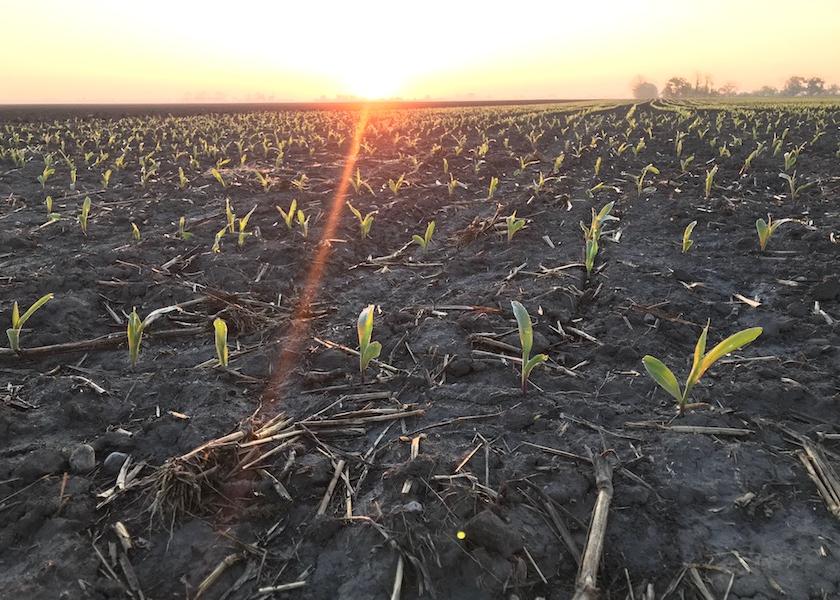One Agriculture

This article was written by Stacey Stearns, educational program administrator for UConn Extension, based in Storrs, Conn.
Organic versus conventional agriculture. Industrial versus sustainable. GMO versus non-GMO. Small farms versus large farms. Family-owned versus corporate-owned. Urban agriculture versus conventional. Agriculture is being pulled in many directions and we are doing it to ourselves. My family has farmed our land since 1772, and that gives me a long view on how agriculture has adapted and how important it is for us to work together.
A wagon or plow trailing a team of horses pulling together appears to glide effortlessly across a field. Put that same wagon or plow behind a mismatched team that doesn’t pull together, and it looks like a slog through thick mud. It might even injure the horses or bust the plow.
Unfortunately, agriculture is populated by that mismatched team pulling in different directions. Conventional agriculture is pulling one way and organic or sustainable agriculture another. Urban agriculture is now gaining traction, and unless we make an effort to integrate it into the team, we could pull our conversation further apart.
Too many within agriculture have chosen sides, however we have similar goals and missions: growing crops and feeding people. We need to reframe the many paths to production so that they pull together like that first team of horses. We need to face the public because our message is more clear and powerful as One Agriculture.
Daunting Challenges
As part of the 10th generation on my family’s farm I see all farmers and agricultural producers as seeking a sustainable path. The root of our problem lies in this divide among the industry. Agriculture needs to go back to the basics and create a foundation of respect and empathy. We do not have to agree with other methods of agriculture, but we do need to accept and allow them. There is room for more than one solution and conventional, sustainable, and urban agriculture can all co-exist and thrive.
Agriculture can lead by example and show that there is room for more than one solution. In fact, we need all solutions. Conventional, urban, and sustainable agriculture all have a place, and we need all of them. Diversity in a group of people allows for creativity. Accepting and encouraging diversity in agricultural practices can increase creativity in production methods, resilience in our practices, and improvements in our industry.
Adopting the One Agriculture Mindset
As such a small segment of the population we can ill afford the infighting. We are operating in a scarcity mindset. Agriculture needs to shift to an abundance mindset. I propose we adopt a One Agriculture mindset to change the conversation and shift our industry into the abundance mindset. Embracing a One Agriculture mindset allows us to see the value and interconnectedness of all segments of agriculture, similar to the way the One Health initiative transcends any one path to healing.
Finding Our Way Forward
There is enough room for all types of agriculture, and we need diversity in agricultural practices and methods to address the challenges of feeding a growing population and adapting to and mitigating climate change. All types of agriculture have shortcomings – an easy solution does not exist to the challenges we face. We can learn from each other though; and respect the ideas and benefits that each agriculture practice provides.
Instead of dissecting the missteps that caused infighting among agriculture, we need to focus on the future, and moving forward. Where do we go from here? How can we embrace and attain a One Agriculture mindset? These steps help shift the mindset:
• Understand and acknowledge various methods of agriculture are relevant and needed. There is room for everyone.
• Initiate dialogues with agriculturalists who practice different methods. Listen to and understand why they selected that option and respect their choice.
• Instead of making negative comments about another method of agricultural production, name one benefit that practice has that is not present in your current method.
• Focus on the unique agricultural contributions that you and others provide. Recognize the synergies and remember that there is room for more than one solution.
• Embrace diversity and promote others that celebrate the One Agriculture mindset and all possibilities.
A good horse trainer redirects a team of horses and helps them pull together as a team. Patience and perseverance are needed since all horses – like all situations – are unique. The horse trainer works with the horses individually, changes the horse’s positions, or switches horses. The point is – a team that is not pulling together is not effective – and changes must be made to achieve our goals.
The world is a challenging place; let’s not make it any harder for our industry. Changing our approach – like the horse trainer does with the team of horses – increases our effectiveness. We can embrace One Agriculture and be part of the solution of feeding a growing population and responding to environmental issues. We are already stewarding the land for the next generation – it’s time to steward the conversation around agriculture for the next generation as well.
References
Castrillon, C. (2020, July 12). 5 Ways to go from a Scarcity to Abundance Mindset. Forbes. Available at https://www.forbes.com/sites/carolinecastrillon/2020/07/12/5-ways-to-go-from-a-scarcity-to-abundance-mindset/?sh=56117a081197
American Farm Bureau Federation (2019). Fast Facts About Agriculture and Food). Available at https://www.fb.org/newsroom/fast-facts.
Miller, Michelle. (2021, February 9). Ag attacking ag: When online words really hurt. AgDaily. Available at https://www.agdaily.com/insights/ag-attacking-ag-online-words-really-hurt/
One Health (n.d.). CDC. Available at https://www.cdc.gov/onehealth/index.html.
Wright, J. (2017, February 21). Open Data: A Key to Feeding 9 Billion People by 2050. United States Department of Agriculture. Available at https://www.usda.gov/media/blog/2015/09/18/open-data-key-feeding-9-billion-people-2050.







